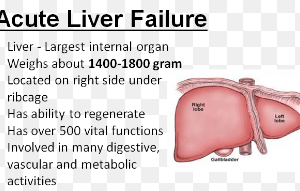
“For unknown reasons, some patients are able to tolerate very low ejection fraction without failure of other organs” including the kidneys, says Dr. Mark Pool, MD, a board-certified cardiothoracic surgeon based in TX who’s been in private practice since 2011.
It’s truly remarkable: A patient goes into acute renal failure while having an ejection fraction of 15 percent.
There is no other cause of the acute kidney injury (such as a blood clot local to that area).
There is worsening renal function (e.g., creatinine of 4.5), secondary to acute heart failure, and the echocardiogram shows an ejection fraction of under 20 percent.
When ejection fraction is under 20 percent, it’s so bad that there’s no significant difference between 17 percent, 15 percent, 12 percent or even eight or five percent.
Another thing to consider is that an echocardiogram does not show a precise, absolute number for the ejection fraction.
The interpretation of EF on an echocardiogram is not as precise as, for instance, measuring blood pressure, blood sugar, cholesterol or heart rate. Instead, it’s an estimation.
But certainly, when a doctor says your ejection fraction is under 20 percent or only five percent, there is no mistake that you have a pretty severe case of heart failure.
Chronic kidney failure or renal insufficiency goes hand-in-hand with chronic heart failure.
But what’s going on with people who are living with ejection fractions in the single digits and stabilized kidney function, vs. those with much higher ejection fractions and terminal renal failure?
Dr. Pool explains, “It is unscientific, but I have to believe that those patients [who have five percent ejection fraction but no acute kidney failure] had a lot of margin to begin with — that is, when they were born, they had 10x as much perfusion [blood flow] to the kidneys as they needed, so that when you cut it back to an ejection fraction of five percent, there is still enough perfusion to keep the kidneys working.”
Think of it this way: These patients have genetically resilient kidneys. Somehow, someway, their kidneys are designed to withstand large reductions in perfusion.
Perhaps their kidneys naturally have a denser than average volume of blood vessels.
Perhaps the arteries that branch off from the abdominal aorta and feed into the kidneys are just a little bigger than average in diameter.

Dr. Pool performs some of the most complicated and high-risk heart surgeries in North Texas, including redo operations and multi-valve surgery, and has performed over 3,000 major operations.
 Lorra Garrick has been covering medical, fitness and cybersecurity topics for many years, having written thousands of articles for print magazines and websites, including as a ghostwriter. She’s also a former ACE-certified personal trainer.
Lorra Garrick has been covering medical, fitness and cybersecurity topics for many years, having written thousands of articles for print magazines and websites, including as a ghostwriter. She’s also a former ACE-certified personal trainer.
.

























